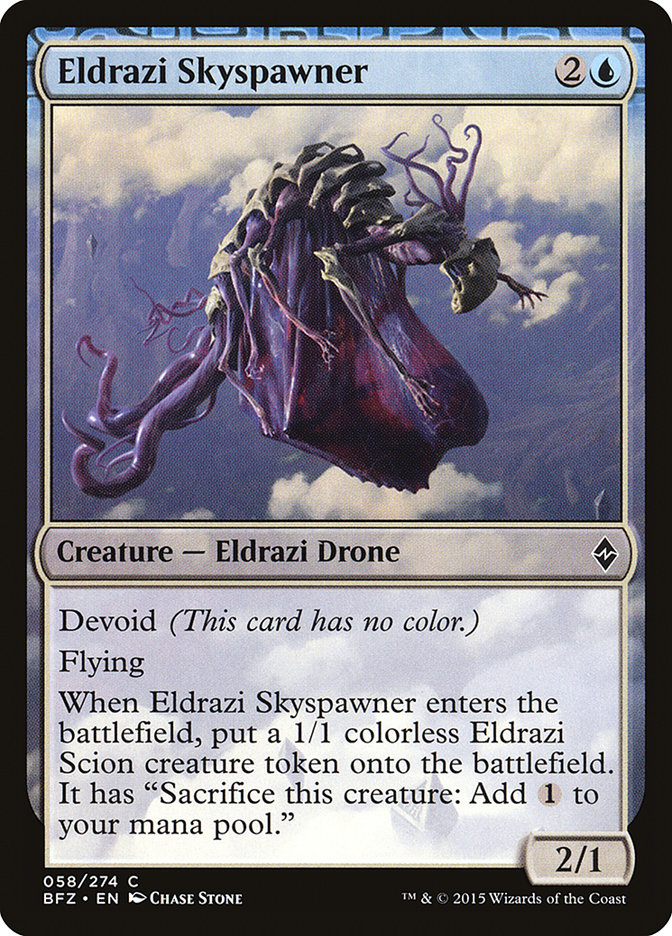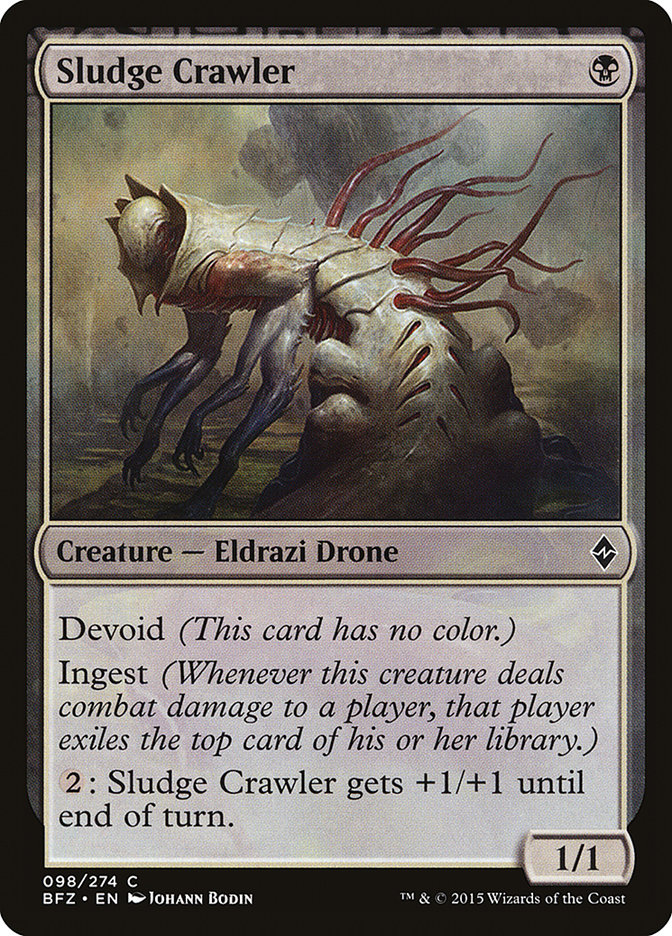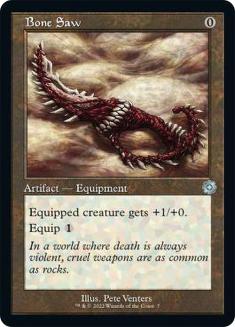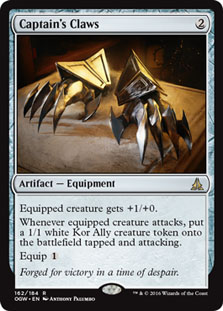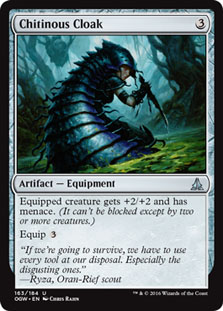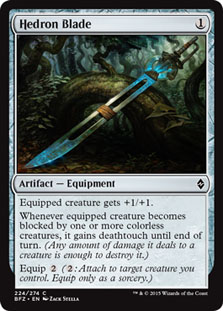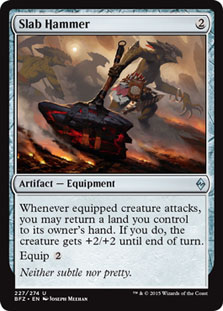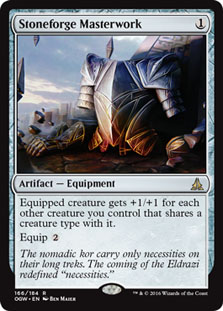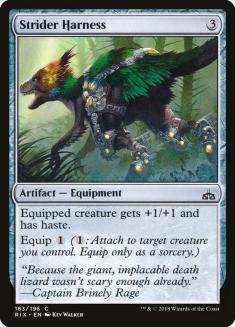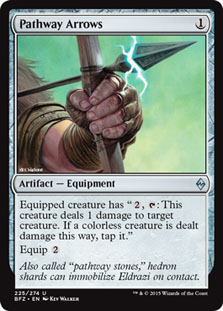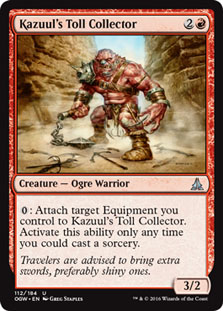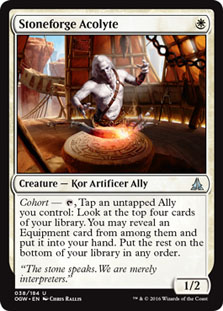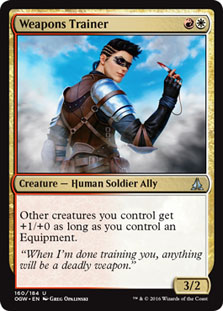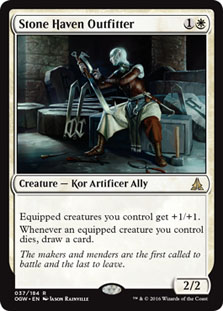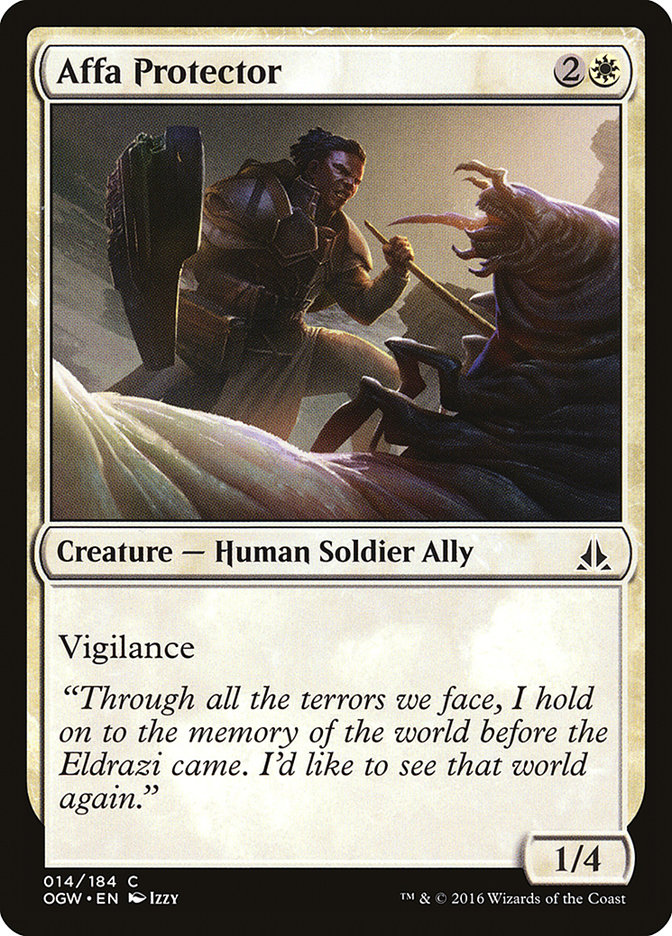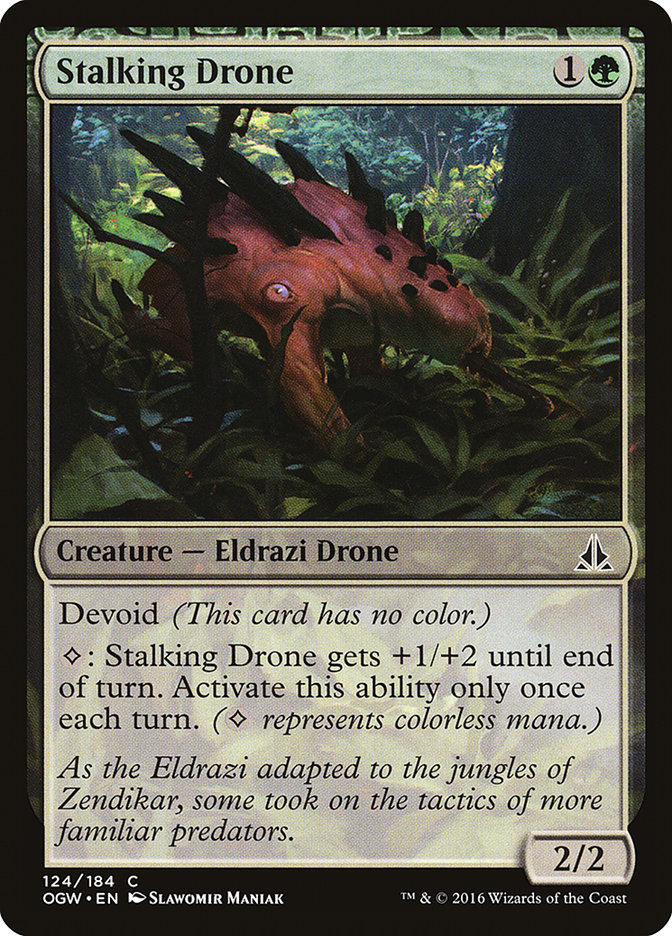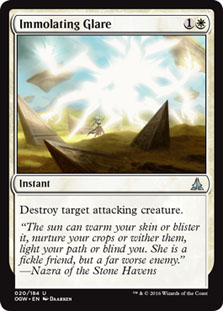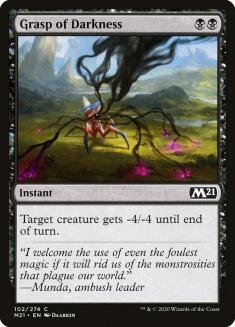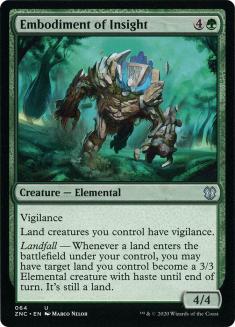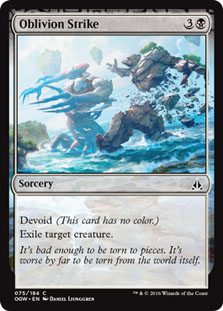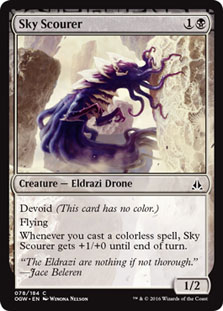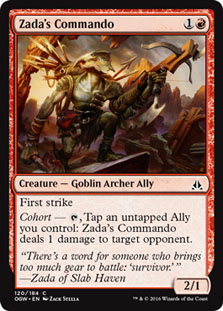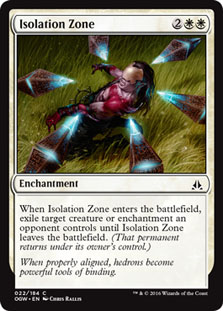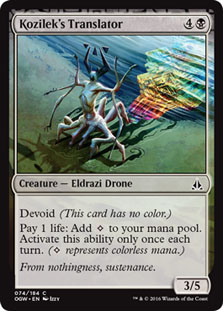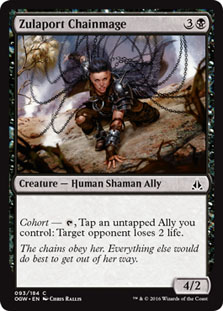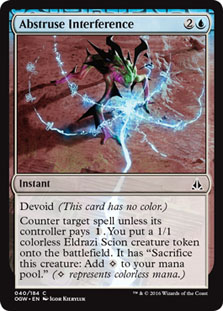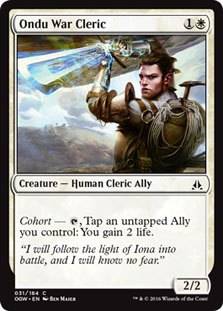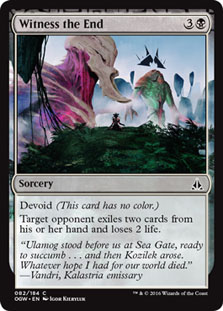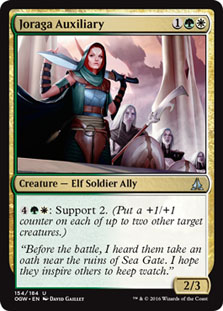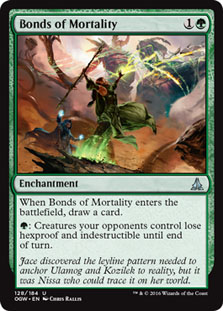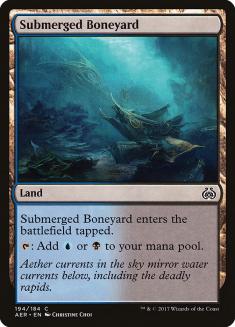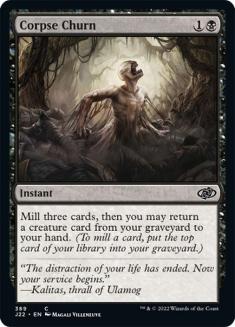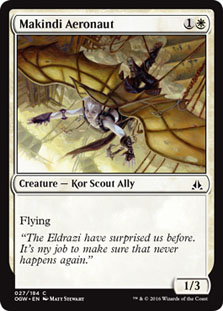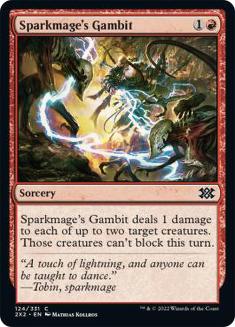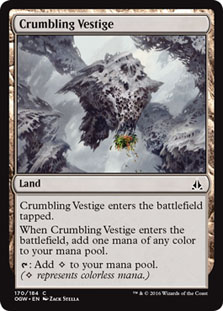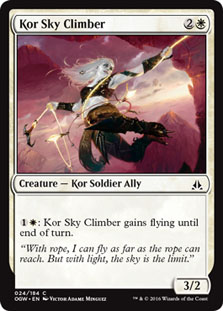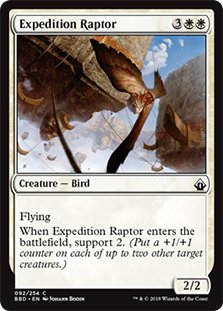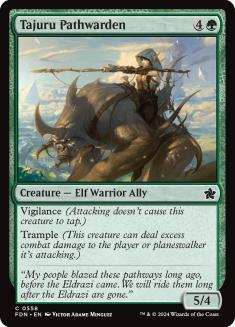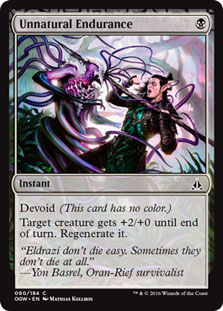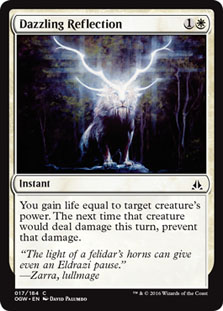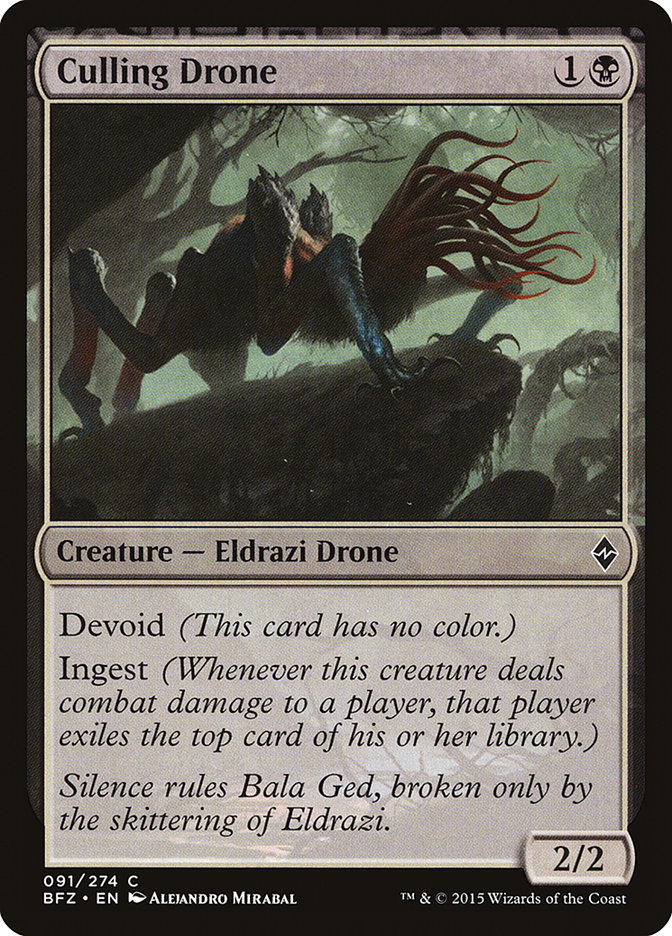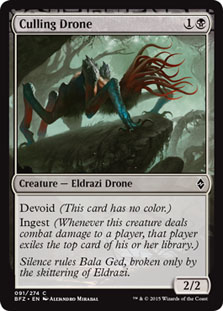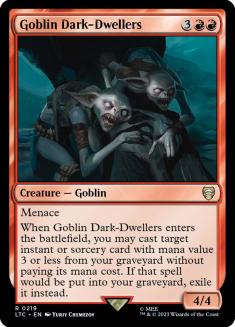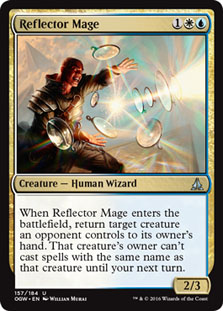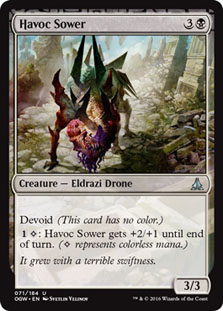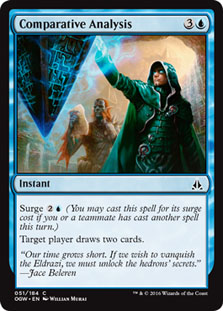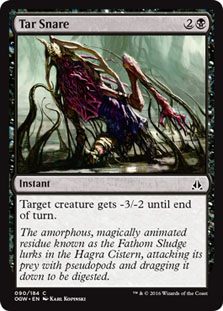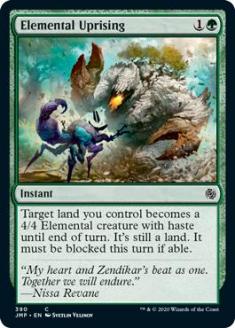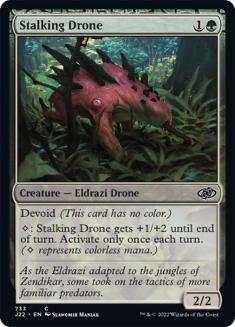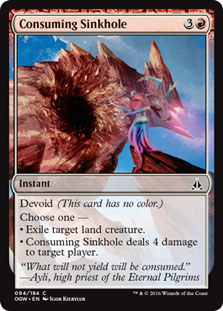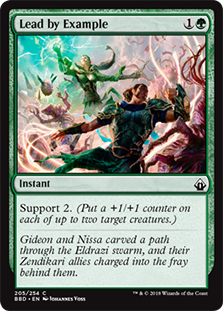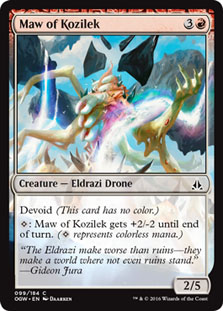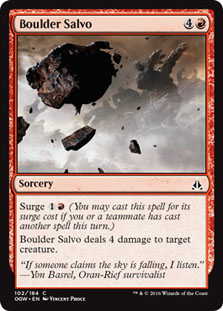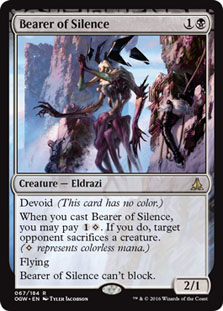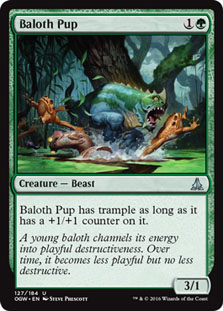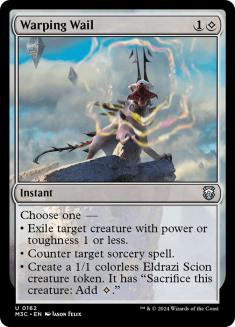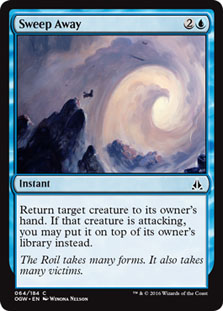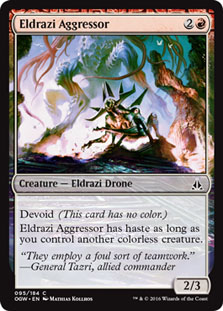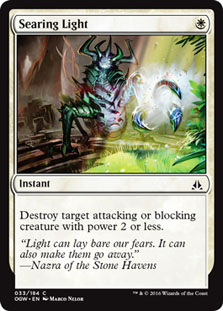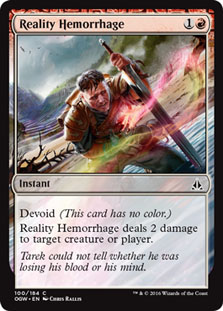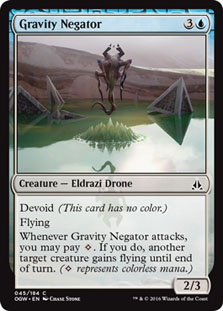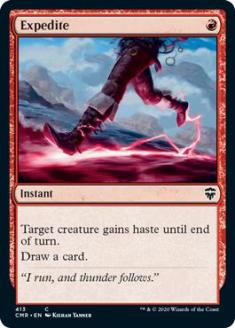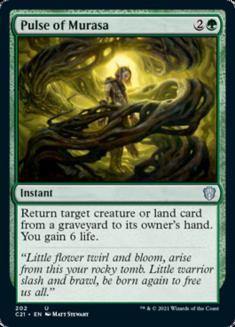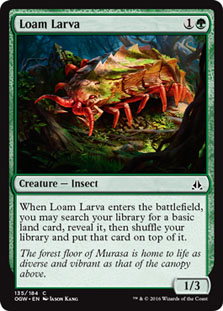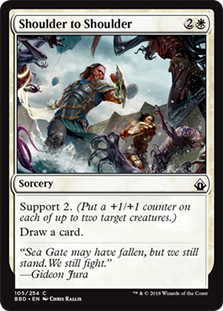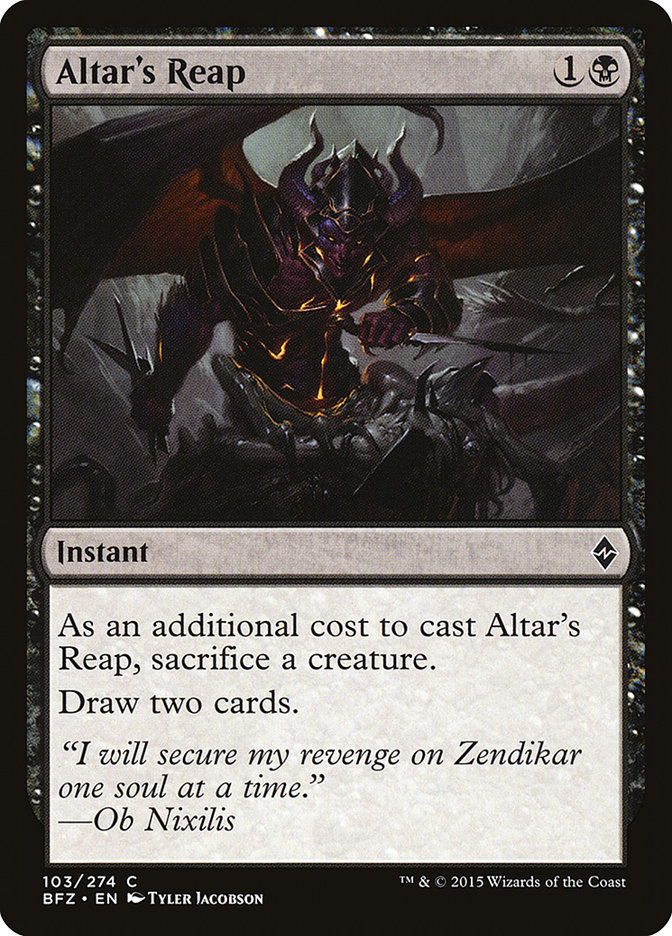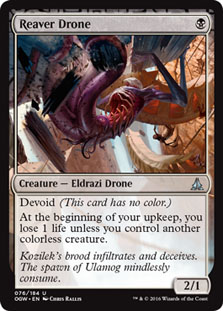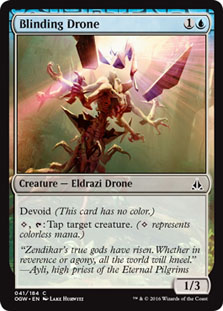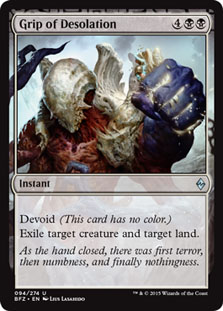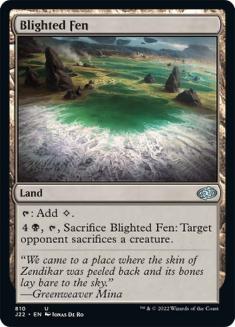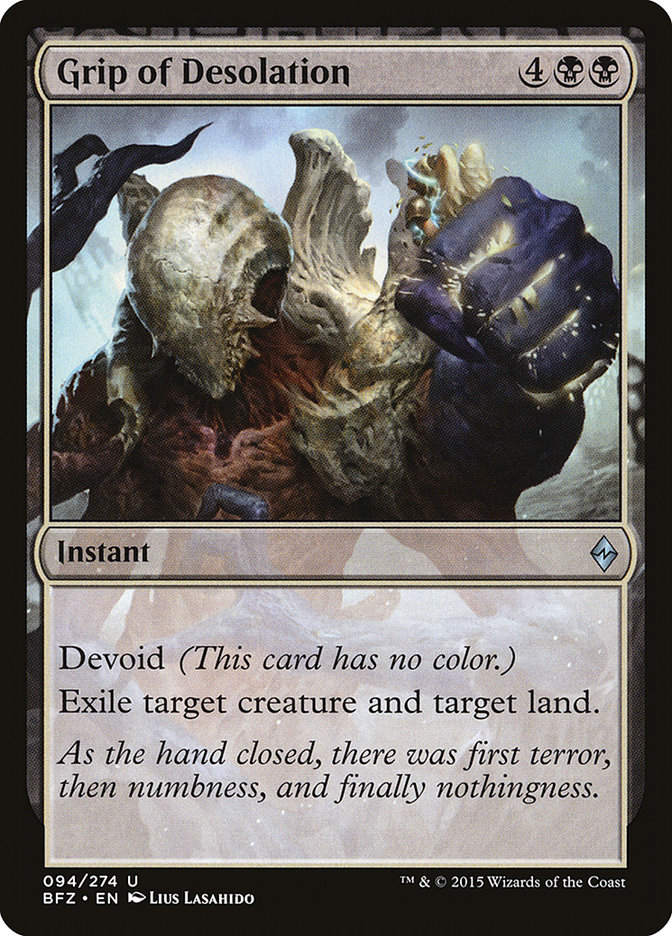The Oath of the Gatewatch Prerelease is in the books and the days of the tentacles are just ramping up in Standard, but Oath of the Gatewatch’s draft format is what’s on my mind with Grand Prix Vancouver and Pro Tour Oath of the Gatewatch fast approaching.
Today I’ll talk about how the new cards shake up the draft format and share my initial thoughts by going over some draft decisions, build decisions, and mulligan decisions so you can crush any draft pod you might end up in. I give you my oath it’s going to be more fun than watching paint dry on a gate.
New Set, Meet Old Set
The new draft format uses two Oath of the Gatewatch packs drafted first and second and then one Battle for Zendikar pack drafted last.
This means we have two-thirds new cards and one-third old cards each draft, which makes our past experience with Battle for Zendikar “imp” – in other words, one-third of important. But not all that experience will carry over perfectly; figuring out how the old cards in Battle for Zendikar interact with the new cards in Oath of the Gatewatch, which get better and which get worse with the new strategies, is crucial. We need to explore what’s new while also identifying what changes with the old. You can’t prepare a delicious sandwich if you aren’t intimately familiar with how all the ingredients taste and work together.
Oath of the Gatewatch Draft
Here are my initial thoughts on how the formatplays out:
Oath of the Gatewatch introduces more archetypes and subthemes to old archetypes than triple Battle for Zendikar had. This makes some of the old strategies weaker since you only have one pack dedicated towards them. Fewer cards that exile and fewer opportunities to pick up ingest cards mean Processors get worse. In general the ally strategies have gotten more to work with, and the ingest strategies have gotten less. This can lead to some unfocused decks wanting to do two different things that don’t work well together.
The format got slower due to being diluted by competing strategies, which opens the door for clunkier value cards and clunkier value decks to be better. It also opens the door for hyper-focused aggressive decks to capitalize on clunkier strategies.
R/W Allies – Equipment Subtheme – Get lots of allies and attack, now with an equipment subtheme.
Look for all of this stuff:
There are plenty of good synergies here and the aggressive Ally strategy gets more focused, since all three packs will help it a great deal.
G/W Allies – Swarm Subtheme – G/W Allies became more synergistic, which is good since green needs the help, being the weakest color in Battle for Zendikar. A focused aggressive Ally deck can be very powerful now as other archetypes are slowing down and all over the place. There are lots of ways to make tokens and buff your team. Swarm and support.
B/W Lifegain Allies – More to work with here too.
G/R Landfall Aggro – You can get pulled into wanting colorless mana here now thanks to efficient beaters like Stalking Drone. Might be a little bit of a trap.
U/B Ingest Control – Wastes Subtheme – U/B wants colorless mana now a lot of the time. It can be difficult drafting the perfect amount of colorless sources and juggling Processors.
U/W – Awaken, Wastes, Fliers, Processors, Control Subthemes – All over the place and all of it is good. Usually fliers and a bunch of good cards supporting them will be the name of the game.
U/R Devoid – Gets diluted and you’ll get fewer opportunities to have a really good aggressive version of the deck.
B/R Aggro Devoid – Allies, Control Subthemes – Pulled in different directions, less likely to get a great aggressive version.
Sultai Ramp/Swarm/Converge/Control – Splashing is thrown a bone in a big way thanks to Crumbling Vestige and Holdout Settlement and a general slowing down of the format. Light splashes got more appealing in general, but focused multicolor decks that take advantage of the best cards available to them are more appealing as well.
Draft 1
All right, now that we have a rough idea of what we’re getting into, we can get down to business. We have our two new Oath of the Gatewatch packs and a Battle for Zendikar pack in front of us. We open our first Oath of the Gatewatch pack and see…
Pack 1, Pick 1
What would you take Pack 1, Pick 1?
Analysis:
Stone Haven Outfitter – The equipment subtheme is likely not deep enough to justify taking a first-pick Grizzly Bear.
Embodiment of Insight – Incredibly efficient and beefy stats for five mana. Worth considering to stay out of the other colors in the pack but still probably not quite as good as the removal options.
Immolating Glare vs Isolation Zone – A pack full of removal is rarely a bad place to start. Isolation Zone is likely just better since Immolating Glare is so situational.
Grasp of Darkness vs Oblivion Strike – Grasp of Darkness is more efficient and instant speed, but Oblivion Strike takes down everything including Eldrazi, is splashable and better in a wider range of decks, and exiles. There’s a good chance the person you’re passing to on your left will take Grasp of Darkness or Oblivion Strike, whichever one you end up passing, which makes running a less dedicated black deck more appealing.
My Pick: Oblivion Strike
Pack 1, Pick 2
Assuming we took Oblivion Strike first pick, what would you take Pick 2?
Analysis:
Crumbling Vestige – This is the classic second pack: rare missing and slim pickings. Crumbling Vestige is great to have and doesn’t commit you to anything but is not an exciting second pick.
Joraga Auxiliary – Potentially the most powerful card out of a weak second pack is appealing. It doesn’t work too well with our first pick, but that isn’t necessarily the end of the conversation. Joraga Auxiliary is an Ally that can break board stalls, which is useful in this format, and permanently pump other creatures at instant speed, making any sort of combat miserable for an opponent. If we didn’t already have Oblivion Strike, Joraga Auxiliary might just be the pick.
Seer’s Lantern – There is a lot of value in not committing to a color early on in a draft. I would just bide my time and take Seer’s Lantern. It provides ramp in the early game, scrys in the late game, does a very passable Crystal Ball impression, and even provides “fixing” in the form of colorless mana.
My Pick: Seer’s Lantern
Build – Draft 1
The rest of the draft goes kind of strange and we end up drafting a B/R Control deck with a couple of unfocused devoid cards, featuring Goblin Dark-Dwellers, Rolling Thunder, and Sifter of Skulls:
Creatures (14)
- 2 Culling Drone
- 1 Valakut Invoker
- 1 Goblin Dark-Dwellers
- 1 Flayer Drone
- 1 Sifter of Skulls
- 2 Akoum Flameseeker
- 2 Zulaport Chainmage
- 4 Vampire Envoy
Lands (18)
Spells (9)

You’ll notice the list has 41 cards. We need to make one more cut. We’re already running eighteen lands and running a decent number of subpar cards that are worth considering giving the axe to. What would your last cut be?
My cut?
Culling Drone is not very synergistic in our deck. We have no need for ingest and little need for a bear. Our curve is a little top-heavy, but our four Vampire Envoys are going to gum things up nicely and we even have a spare Culling Drone that fills out our curve nicely for any early game trades.
Opening Hands – Draft 1
Now for some mulligan decisions. Remember to pause, think, and allow yourself to make the correct decision. Taking a beat to pause before every mulligan decision is a great skill. All too often I find myself keeping hands I shouldn’t be because I don’t think for even one second.
On the play against an unknown opponent. Keep or mulligan?
What’s the call?
My play: Keep.
We have two draw steps to hit the land we desperately want. If we do draw it immediately, we’re golden! The hand should be great from that point forward. If we don’t, we still have our remaining Culling Drone to hold the fort and try to buy more time. Once we do hit our third land, Seer’s Lantern can help us find more if need be. Goblin Dark-Dwellers is powerful, even though we don’t have many targets for it in our deck, and even though we don’t have any red sources yet, the rest of our hand should buy time.
One issue is that if we don’t draw a land for a few turns we can’t actually draw many castable spells either, since our curve is so high. We are all-in on drawing a land, but I think it’s an appropriate risk, since we’re a favorite to draw it by turn 3 and likely to stabilize even if we draw a land as late as turn 5.
Draft 2
Pick 1, Pack 1
What would you take Pack 1, Pick 1?
Analysis:
Boulder Salvo – Solid removal, but still requires a little work to cast for cheap, and at five mana it’s fairly unexciting.
Gladehart Cavalry – A little on the expensive side for a hyper-aggressive green deck but well within the realm of castability. It’s hard to get full value out of its support since you need six other creatures, but when you cast it and have a decent board it’s going to be hard to lose. Another consideration is that green might not be your preference and it isn’t an Ally.
Reflector Mage – Even though it’s two colors, Reflector Mage is too tempting to pass up. It’s a massive tempo swing attached to a decent-sized body, and it can even be a semi-Time Walk in the late game, especially when you’re bouncing an Eldrazi. It is the most powerful card in the pack and worth the chance that you won’t end up playing it.
My Pick: Reflector Mage
Pack 1, Pick 2
Assuming we took Reflector Mage first pick, what would you take pick 2?
Analysis:
Warping Wail – Certainly playable, but really not even that strong when you have the colorless to cast it. There are plenty of good sorceries to counter, but not actually that many creatures to exile, and the priority targets are the bigger creatures.
Reality Hemorrhage – Solid removal, but not amazing. Having the ability to deal with large creatures is important, and it doesn’t fit with Reflector Mage.
Sweep Away – On color with the first pick and a powerful card, but relatively unexciting. Overcosted as a bounce spell and as situational as Griptide.
Bearer of Silence – The best card in the pack, and good enough that I think I would just take it even though it doesn’t fit with our first pick. Bearer of Silence is decent on turn 2 as a flier and amazing whenever it’s able to catch anything bigger than an Eldrazi Scion. It is also fairly splashable.
My Pick: Bearer of Silence
Build – Draft 2
The white dries up beyond our first-pick Reflector Mage and we end up with:
Creatures (12)
- 1 Ulamog's Reclaimer
- 1 Silent Skimmer
- 1 Mindmelter
- 1 Bearer of Silence
- 1 Reaver Drone
- 2 Blinding Drone
- 1 Gravity Negator
- 1 Kozilek's Shrieker
- 1 Slaughter Drone
- 2 Kozilek's Translator
Lands (18)
Spells (11)

This list also has 41 cards and we need to make a cut. What would your last cut be?
Take your time. I’ll wait.
My cut?
There are very few creatures we want to sacrifice and we already have Blighted Cataract and Comparative Analysis for card draw. Altar’s Reap isn’t necessary or wanted for this deck.
Opening Hands – Draft 2
On the draw against an unknown opponent. Keep or mulligan?
The perfect curve… assuming you draw lands. It’s too often that keeping a one-land hand backfires, even if you have a good hand to go with it. If the hand happened to only need to draw one or two lands, it would be reasonable, but this hand requires multiple lands off the top to keep functioning.
My play: Mulligan.
Now, the same game on the draw against an unknown opponent. You’ve mulliganed down to five cards. Keep or mulligan?
Far better to make your land drops than to miss them. This hand gives you plenty of time to find plays to get back in the game and you have the colors (and colorless) mana to cast whatever you draw. There isn’t really much incentive to mulligan down to four cards, since you just don’t have enough cards at that point to have a better hand, even if you handpicked them.
My Play: Keep.
You keep the five-land hand and scry and see:
Do you put it on top or bottom?
With this hand and this deck, if it’s not a land on top, I’m keeping it, even if it’s the one card in the deck you can’t cast yet. Grip of Desolation is slow but powerful and capable of dealing with problem cards if you manage to gum up the board.
My Choice: Top.
There you have it! Oath of the Gatewatch looks like a lot of fun and I can’t wait to play more with it. Do you strongly agree or disagree with my choices? Let me know in the comments!


